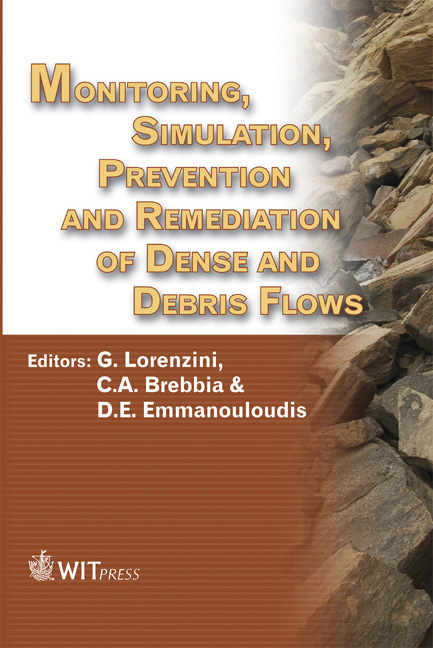Flood Modelling And Impact Of Debris Flow In The Madarsoo River, Iran
Price
Free (open access)
Transaction
Volume
90
Pages
10
Published
2006
Size
5,255 kb
Paper DOI
10.2495/DEB060071
Copyright
WIT Press
Author(s)
S. Tjerry, O. Z. Jessen, K. Morishita & H. G. Enggrob
Abstract
Madarsoo River with a catchment area of 2360 km 2 originates in the Alborz Mountains, runs through the national Golestan Forest and into Golestan reservoir. Three major flashfloods have taken place during the past five years, and oddly enough all three flashfloods took place in the dry season (mid-August), with the largest recent flashflood (10 August 2001) killing about 250 people, mostly in the Golestan Forest. Debris flow occurs along part of the Madarsoo where the tributaries have high slopes and intense rainfall. The objectives of the present study are to produce flood maps for the area and to assess the hydraulic impact of debris flow. The work has been carried out as part of \“The Study on Flood and Debris Flow in the Caspian Coastal Area Focusing on the Flood-Hit Region in Golestan Province” financed by Japan International Cooperation Agency (JICA). Keywords: flashfloods, hydrological modelling, hydraulic modelling, morphological modelling, GIS, debris flow, flood mapping, disaster management. 1 Introduction Three models were constructed for the Madarsoo River. A hydrological model consisting of coupled MIKE SHE and MIKE 11 models was used at basin scale for determining the distributed inflows to the river system. A MIKE 11 hydraulic model covering the reach from Dasht village to Golestan Dam was used for hydraulic modelling and flood mapping. Finally a local morphological model with inclusion of debris flow was used for quantifying the hydraulic impact of
Keywords
flashfloods, hydrological modelling, hydraulic modelling, morphological modelling, GIS, debris flow, flood mapping, disaster management.





